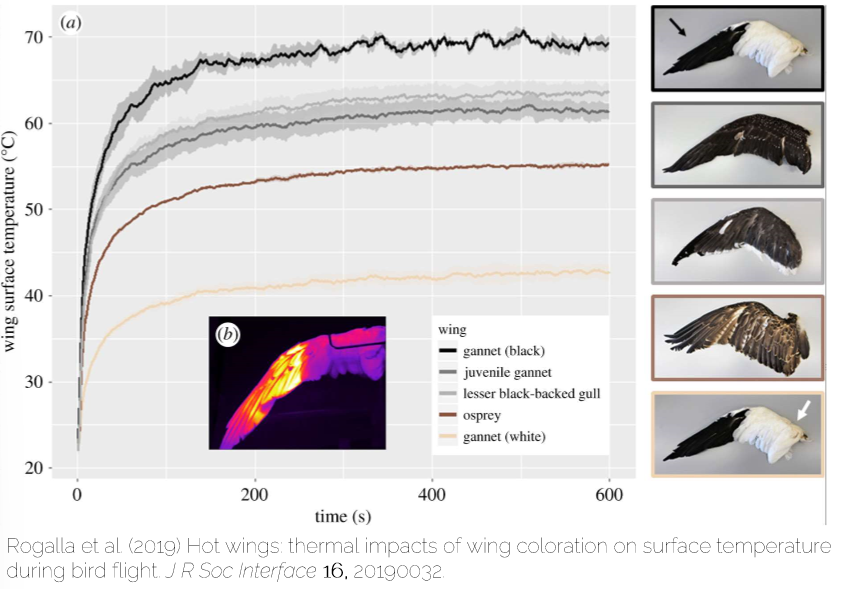L14- Origin of Flight
1/29
There's no tags or description
Looks like no tags are added yet.
Name | Mastery | Learn | Test | Matching | Spaced |
|---|
No study sessions yet.
30 Terms
Flight has made birds…
successful
Murmurations→
Starling birds move together in large groups, function is unknown, is not just individual flying that is important
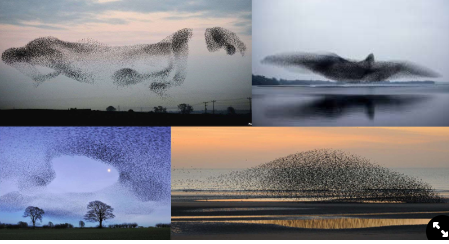
Advantages of Flight:
Predator escape
Foraging
Cost-efficient locomotion→ gliding, moving long distances with low energy
Colonisation→ of islands
Migration→ to escape the winter
Constraints of flight:
birds are diverse but uniform in morphology
need major physiological and anatomical adaptations for light
birds have a limited size and weight range (~12kg)
the muscle power needed to take off increases by x2.25 as the biomass double
→ physically cannot get a bigger bird than this as it would not be strong enough able to fly
The evolution of feathers:
Some theropods had feathers
Dromaeosaurs had feathers
Feathers are homologous to reptilian scales
Feathers did not evolve for flight→ evolved for insulation or display
Now feathers have multiple functions e.g. insulation, display, thermoregulation, flight…
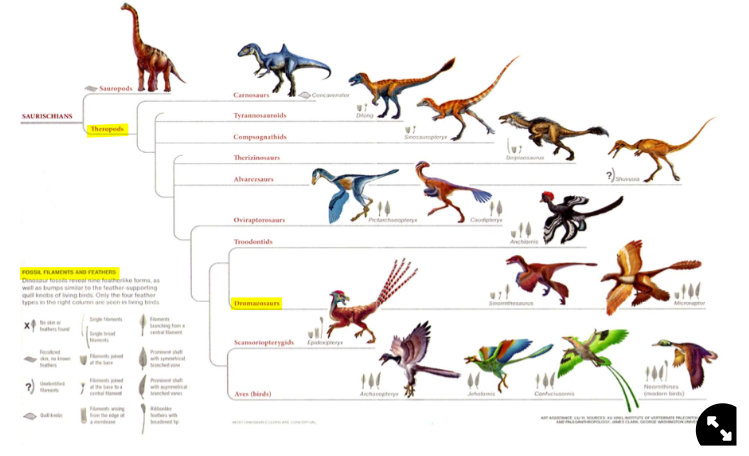
Hypotheses for the origin of flight:
Cursorial Theory
Arboreal Theory
Wing-Assisted Incline Running (WAIR)
Pouncing Pro-avis Hypothesis
Raptor Prey Resistant Model (Ripper Behavioural Model)
Cursorial Theory-
wings helped with stability when running or catching flying prey (insects)
ground-based theory
Arboreal Theory-
wings helped with stability for locomotion in trees
tree-based theory
Wing-Assisted Incline Running (WAIR)-
wings evolved to assist climbing trees
is seen in extant juvenile birds, pigeons using wings for extra thrust
Pouncing Pro-avis Hypothesis-
wings evolved to jump and bounce on prey→ facilitate hunting
is the alternative to cursorial theory
Raptor Prey Resistant Model (Ripper Behavioural Model)-
wings were used to pin down prey on the floor→ facilitates hunting/foraging
Which theory of the origin of flight is right?
Cursorial theory was initially favoured but there are also problems with the cursorial theory
There is also evidence for the arboreal theory
Evidence for the cursorial theory:
Archaeopteryx morphological evidence shows it had gliding abilities but not flying abilities
Archaeopteryx had no trees where they were found
The spreading of feathered forelimbs (which turned into wings) was probably originally used for stabilisation whilst running
Problems with the cursorial theory:
Velocity gap→ Archaeopteryx ran up to 2m/s but it would have needed to run at least 6m/s to get off the ground
There are high energy demands needed for flight that Archaeopteryx may not have had
Cannot explain the origin of lifting off the ground in an earthbound organism
Evidence for the arboreal theory:
The Hoatzin bird has retained its claw at the end of its wings
Pigeons have an alula
Feduccia;s claw arc analysis
Hoatzin bird retaining its claw:
in the juveniles, it is used to help move in trees
it is similar to the claw in Archaeopteryx
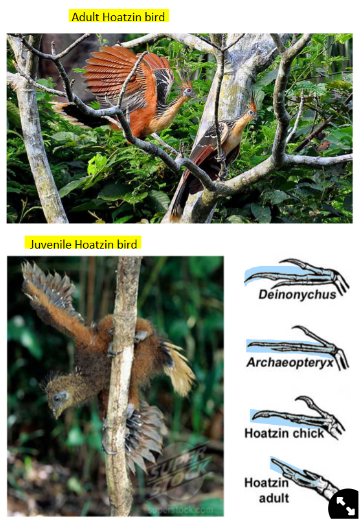
Pigeons have an alula:
may have been the remains of the claw that evolved into a feather
is used to reduce turbulence when flying
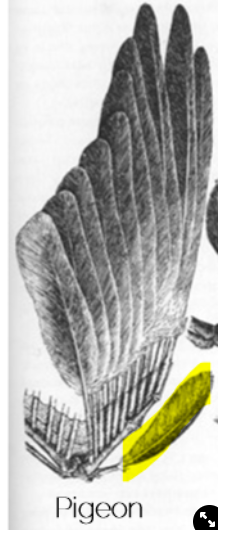
Feduccia’s Claw Arc Analysis:
analysed different traits of the claw and compared to many species of different habitats
found that ground-dwellers had flatter claws than perchers
Archaeopteryx front claw is like a climber but the back claw is like a percher
→ Archaeopteryx evolved in the trees, perched and used wings to climb
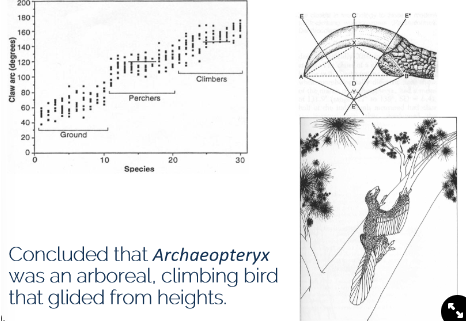
Issue with the arboreal theory:
there were no trees where Archaeopteryx fossils are found
Structure of feathers:
Have a shaft down the middle
On each side of the shaft are barbs
From the bards are barbules→ tiny hooks that stick to each other to maintain waterproof properties
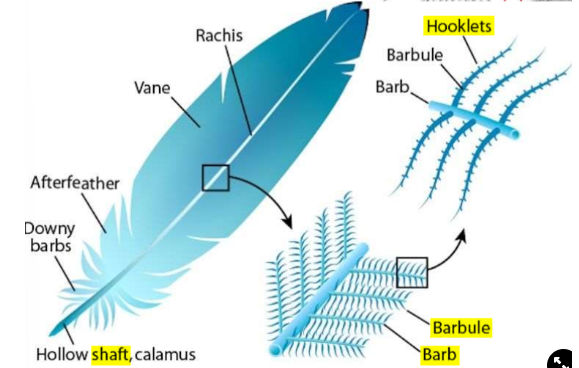
Preening
put oil onto feathers to maintain structure and keep waterproof
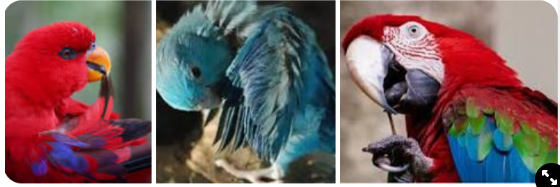
Components of feathers:
keratin
lipids
water
pigments
There are many types of feathers in extant birds e.g.:
Down feathers→ thermoregulation
Semiplume feathers→ insulation
Tail feathers→ stability
Wing feathers→ flight
Filoplume and bristle feathers, e.g.:
Common Poorwill bird use bristles around their beak to detect prey movements
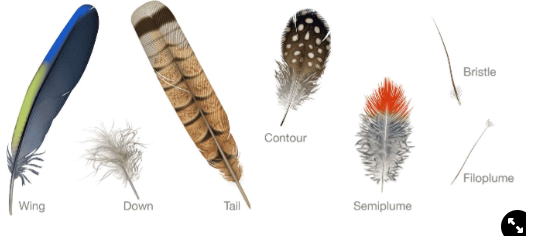
How does flight work?
the wings act as an aerofoil and a propeller→ lift and move forward
the shape, area and angle of the wings change whilst flying:
the wing tips (the primary feathers) are responsible for thrust and moving forward
there are different forces at play during flight
different parts of the wings have different functions
different wing shapes are associated with different types of flight
birds have a unidirectional air flow in their lungs and a higher oxygen concentration than mammals, needed for flight
the shape, area and angle of the wings change whilst flying:
the top of the wing has a larger surface than the underwing
air moves slower at the top of the wings
this creates a pressure gradient of low pressure above the wing and high pressure below the wing
the pressure gradient creates lift
can also use temperature gradients in the air to create lift
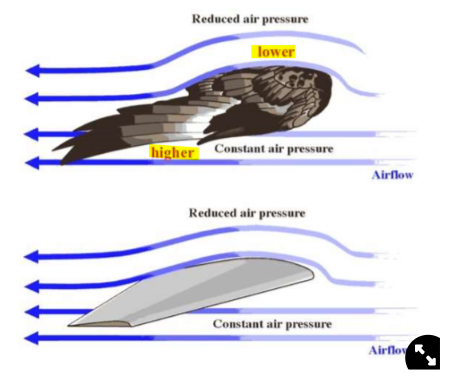
there are different forces at play during flight:
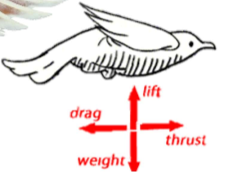
different parts of the wings have different functions:
the part of the wing closest to the body remains flat during flying
at downstroke, the end of the wing has a steep angle which allows converting uplift force into downward and sideways movement too
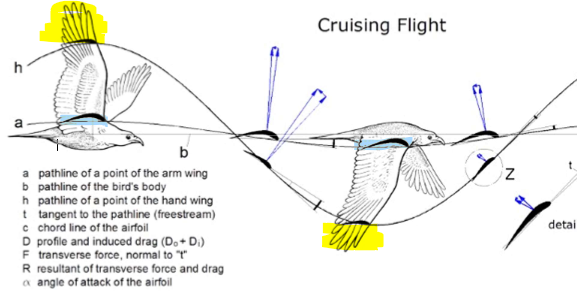
different wing shapes are associated with different types of flight:
aspect ratio (length-width ratio) is a strong indicator of the type of flight used:
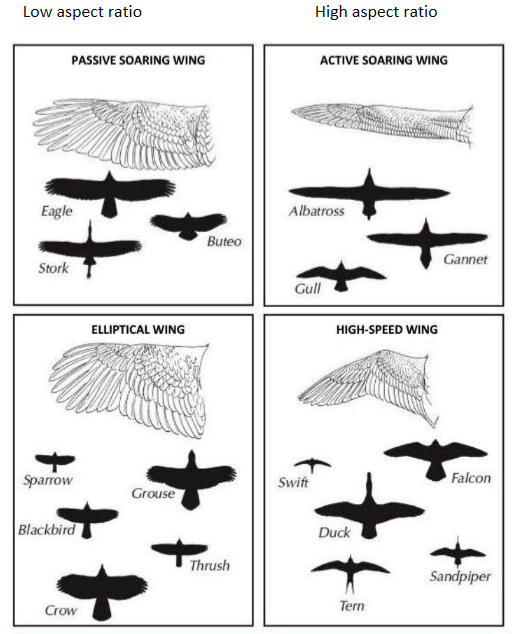
Colours and patterns in feathers are used for:
sexual selection
crypsis→ predator avoidance mechanism
pigments→ display and efficiency of flying
iridescence→ colour changes depending on the angle
→ colours are made of pigments and structural properties
Feathers can be used for insulation:
different colours have different absorption properties
darker colours keep more heat in than lighter ones
white feathers with black tips have a difference in temperature that creates a conductive current towards the tip to allow lift and help with flight
